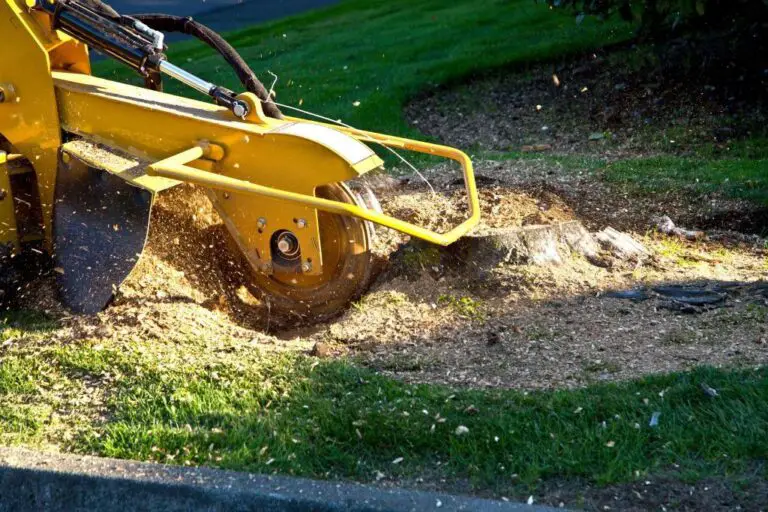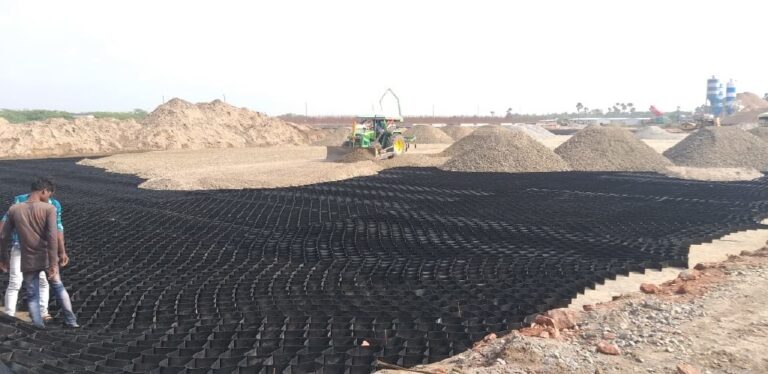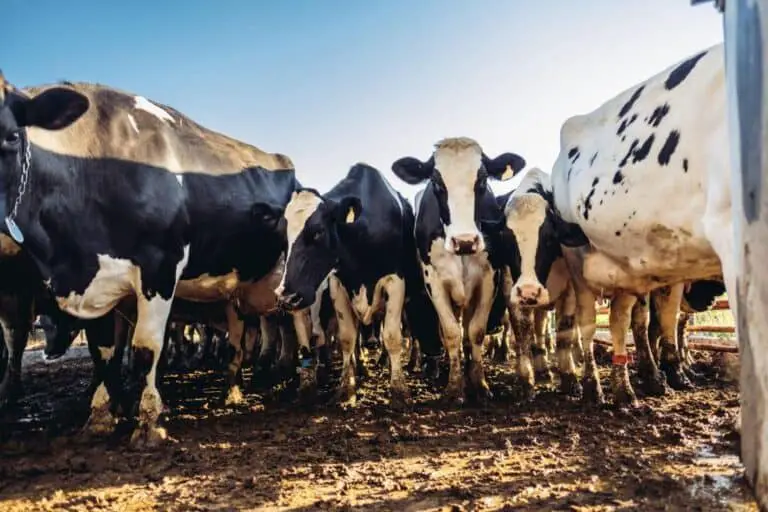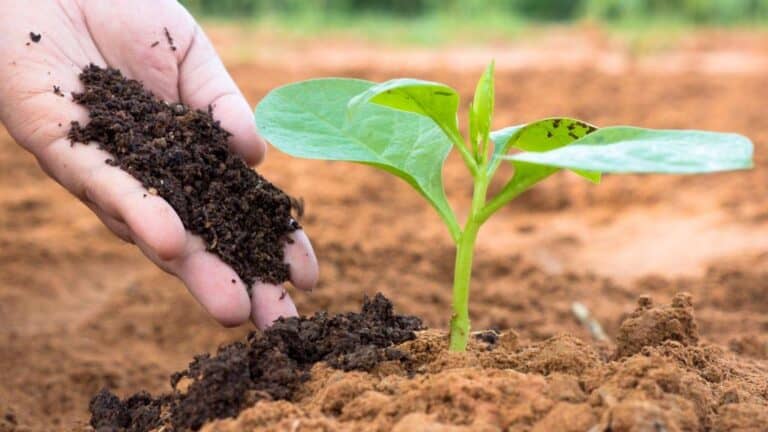Does Topsoil Have Fertilizer in It? Beneath the Surface

When we think about gardening or farming, we often focus on the plants themselves—choosing the right seeds, providing adequate water, and ensuring they receive enough sunlight. But there’s another critical factor that often goes unnoticed, hidden beneath the surface: topsoil.
Topsoil is the unsung hero of agriculture, the layer of earth where plants root and grow, drawing essential nutrients for their nourishment. Does topsoil already contain the magic of fertilizer within its grains, ready to nourish the plants that rely on it?
While topsoil is generally rich in organic matter and nutrients, it may not always contain enough fertilizer to fully nourish plants. The composition of topsoil can vary, and its properties, such as drainage and aeration, may not be suitable for optimal plant growth.
In this article, we’ll delve deep into the world of topsoil, exploring its composition, nutrient content, and the role it plays in supporting plant life. We’ll also discuss organic matter, natural fertilization processes, and the impact of synthetic fertilizers on this precious resource. So, let’s start by understanding the composition and significance of topsoil.
Understanding Topsoil Composition
Topsoil is the uppermost layer of soil, typically ranging from 2 to 8 inches deep, though it can vary in thickness. It is crucial for plant growth as it contains a rich blend of minerals, organic matter, and microorganisms. This layer acts as a reservoir for nutrients, water, and the biological activity that supports plant life.
Soil is not homogenous; it consists of several distinct layers or horizons. These include the O horizon (organic matter), A horizon (topsoil), B horizon (subsoil), C horizon (parent material), and sometimes the R horizon (bedrock). Each layer has its unique characteristics and plays a specific role in soil health and plant growth.
Topsoil is often distinguished from subsoil primarily by its organic matter content, nutrient concentration, and microbial activity. While topsoil is rich in organic matter and humus, subsoil typically lacks the same level of fertility. Understanding these differences is vital for successful gardening and agriculture.
Topsoil serves as the primary interface between plants and the soil ecosystem. It provides plants with essential nutrients such as nitrogen, phosphorus, and potassium, which are vital for their growth and development. Additionally, topsoil retains moisture, ensuring plants have access to water during dry spells.
Now that we’ve grasped the basics of topsoil, let’s move on to explore the nutrient content within it.
The Natural Nutrient Content of Topsoil

Topsoil isn’t just dirt; it’s a complex ecosystem filled with nutrients that plants need to grow. These nutrients include macronutrients like nitrogen (N), phosphorus (P), and potassium (K), as well as micronutrients like iron (Fe), zinc (Zn), and manganese (Mn).
The nutrient content in topsoil can vary widely based on several factors. Climate, geological characteristics, vegetation, and human activities all influence nutrient levels. It’s essential to recognize these variables to effectively manage and improve topsoil quality.
Here’s a quick overview of the primary nutrients found in topsoil and their roles:
| Nutrient | Role in Plant Growth |
| Nitrogen | Aids in leafy green growth |
| Phosphorus | Promotes root development |
| Potassium | Enhances overall plant health |
| Iron | Essential for chlorophyll production |
| Zinc | Involved in enzyme function |
| Manganese | Supports various metabolic processes |
Benefits of Topsoil’s Nutrient Content for Plants
Topsoil is a treasure trove of nutrients that plants need to thrive. Some of the key nutrients found in topsoil include nitrogen, phosphorus, potassium, calcium, magnesium, and sulfur. These nutrients are essential for plant growth, supporting functions like photosynthesis, root development, and overall health.
Each nutrient in topsoil plays a specific role in a plant’s life cycle. For example, nitrogen is essential for the formation of chlorophyll, which enables photosynthesis, while phosphorus is crucial for root development and energy transfer within the plant. Understanding these roles helps gardeners and farmers make informed decisions about soil management.
To determine the nutrient content of topsoil accurately, soil testing is indispensable. This process involves collecting soil samples and sending them to a laboratory for analysis. Soil test results provide valuable insights into nutrient deficiencies and guide the application of fertilizers and soil amendments.
Does Topsoil Have Fertilizer in It?
Topsoil does not typically contain a significant amount of fertilizer. When we think of fertilizer, we often refer to concentrated, synthetic, or organic products specifically designed to boost nutrient levels in the soil. Fertilizers are used to supplement the existing nutrient content of topsoil, tailoring it to the needs of specific plants or crops.
While topsoil may provide small amounts of nutrients, its primary purpose is to serve as the uppermost layer of soil, containing most of the nutrients and fertility of the soil. Topsoil is often rich in organic matter, which can help sustain plant life, but it is not enriched or amended to the same extent as garden soil or compost
So, while topsoil contains nutrients, it may not always have the optimal balance or quantity of nutrients required for the specific plants you want to grow. This is where fertilizers come into play.
Natural Fertilization Processes in Topsoil
Nature has its way of enriching topsoil over time. Organic materials, such as dead plants and animal remains, decompose in the soil, releasing nutrients. The weathering of rocks and minerals also contributes to the accumulation of essential elements in topsoil.
Microorganisms like bacteria and fungi play a crucial role in breaking down organic matter. As they decompose these materials, nutrients are released into the soil, becoming available for plant uptake.
Earthworms and soil-dwelling microorganisms are nature’s recyclers. They further break down organic matter, improving soil structure and nutrient cycling. Their activities aerate the soil, enhancing its overall health.
Natural fertilization processes, if allowed to proceed without disruption, can sustain topsoil fertility for years. By adopting practices that support these processes, we can reduce our reliance on synthetic fertilizers and promote a more sustainable approach to agriculture.
Now, let’s turn our attention to synthetic fertilizers and their impact on topsoil.
Synthetic Fertilizer Use and Topsoil
Synthetic fertilizers have revolutionized modern agriculture by providing a quick and concentrated source of essential nutrients to plants. Farmers commonly use them to boost crop yields.
While synthetic fertilizers can enhance plant growth, they also have some downsides. Over time, excessive use of synthetic fertilizers can lead to nutrient imbalances, soil acidity, and a decline in organic matter content.
Organic fertilizers may be a better alternative: Organic fertilizers can provide secondary and micronutrients that are often absent in synthetic fertilizers, and they can also improve soil texture and long-term fertility. Companies are investing in research to develop organic fertilizers that heal the soil while producing great results.
Balancing nutrient levels in topsoil is crucial to avoiding depleting its natural resources. Employing precision agriculture techniques and incorporating organic matter back into the soil are ways to achieve this balance.
To protect topsoil while using synthetic fertilizers, adopting sustainable practices is vital. These include following recommended application rates, timing fertilizer applications correctly.
When to Use Fertilizer?
The decision to use fertilizer depends on several factors, including the type of plants you’re cultivating, the existing nutrient content of your topsoil, and your gardening goals.
Here are some situations where fertilizer may be necessary:
- Poor Soil Quality: If your topsoil is lacking essential nutrients, you may need to supplement it with fertilizer to ensure healthy plant growth.
- Specific Plant Needs: Some plants have specific nutrient requirements that might not be adequately met by the natural nutrient content of your topsoil.
- Fast Growth: When you want rapid growth or high yields, adding fertilizer can provide a boost of nutrients to support the plants’ increased demands.
- Soil Testing: A soil test can reveal the nutrient levels in your topsoil. Based on the results, you can determine if and what type of fertilizer is needed.
Types of Fertilizers
Fertilizers come in various forms, and their composition can differ significantly. The choice of fertilizer depends on the specific needs of your plants and the current state of your topsoil. Here are some common types of fertilizers:
- Complete Fertilizers: These contain all three primary macronutrients – nitrogen, phosphorus, and potassium – in varying ratios. Common examples include 10-10-10 or 20-20-20 blends.
- Nitrogen-Based Fertilizers: These are rich in nitrogen and are often used to stimulate vegetative growth, making them suitable for lawns and leafy vegetables.
- Phosphorus-Based Fertilizers: These promote root development and flowering, making them ideal for flowering plants and fruit-bearing trees.
- Potassium-Based Fertilizers: Potassium supports overall plant health and disease resistance. It’s essential for a wide range of crops.
- Organic Fertilizers: These are derived from natural sources like compost, manure, or bone meal. They provide a slow release of nutrients and improve soil structure.
- Slow-Release Fertilizers: These gradually release nutrients over time, reducing the risk of over-fertilization.
Topsoil Management Practices
1. Best Practices for Topsoil Preservation
Preserving topsoil begins with sound management practices:
- No-Till Farming: Reduces soil disturbance and erosion.
- Mulching: Adds a protective layer to the soil surface.
- Avoiding Heavy Machinery: Minimizes soil compaction.
2. Crop Rotation and Cover Cropping
Crop rotation involves planting different crops in a specific order, which benefits topsoil in various ways:
- Disease Control: Different crops attract different pests and diseases, reducing the risk of infestations.
- Nutrient Recycling: Diverse crops with varying nutrient needs enhance soil fertility.
- Weed Suppression: Rotated crops can naturally suppress weed growth.
Cover cropping involves planting non-harvested crops to cover the soil during fallow periods. This practice helps:
- Prevent Erosion: Keep the soil covered and protected.
- Add Organic Matter: As cover crops decompose, they enrich the soil.
- Enhance Soil Structure: Improves soil’s ability to hold water and nutrients.
3. Soil Conservation Techniques
Soil conservation is essential for topsoil preservation:
- Terracing: Creating level platforms on slopes reduces water runoff and erosion.
- Strip Cropping: Alternating strips of crops and perennial vegetation stabilizes soil.
- Riparian Buffers: Planting native vegetation near water bodies prevents sediment runoff.
4. Avoiding Over-Tilling and Compaction
Over-tilling and soil compaction can harm topsoil:
- Reduce Tillage: Limiting soil disruption preserves its structure and reduces erosion.
- Manage Traffic: Avoid heavy machinery on wet soil to prevent compaction.
- Aerate When Necessary: Aerating compacted soil can improve its structure.
Conclusion
In conclusion, topsoil contains a natural reservoir of nutrients that are essential for plant growth. However, whether or not you need to add fertilizer depends on the specific needs of your plants and the nutrient content of your topsoil. Fertilizers serve as a valuable tool for gardeners and farmers to tailor soil nutrient levels to meet the demands of their crops.
Before applying any fertilizer, it’s essential to conduct a soil test to determine your topsoil’s current nutrient levels. This will help you make informed decisions about which type of fertilizer to use and how much to apply. Remember that over-fertilization can be harmful to both plants and the environment, so use fertilizers judiciously and in accordance with recommended guidelines.
In your journey to cultivate a thriving garden or farm, consider topsoil and fertilizer as partners in creating optimal growing conditions for your plants. By understanding their roles and how they complement each other, you can nurture healthy, vibrant, and bountiful vegetation.
FAQs on Does Topsoil Have Fertilizer in It?
What nutrients are typically found in topsoil?
Topsoil contains a variety of nutrients, including essential macronutrients like nitrogen (N), phosphorus (P), and potassium (K), as well as micronutrients such as iron (Fe), zinc (Zn), and manganese (Mn).
Can I use topsoil as fertilizer for my garden?
While topsoil contains nutrients, it’s not a concentrated fertilizer. It’s best used as a growth medium. For optimal plant health, supplement topsoil with specific fertilizers tailored to your plants’ needs.
How can I improve the fertility of my garden’s topsoil?
You can enhance topsoil fertility by adding compost, organic matter, and balanced fertilizers. These enrichments increase nutrient availability and improve soil structure.
Is it necessary to add synthetic fertilizers to the topsoil?
It depends on your soil’s nutrient levels and your plants’ requirements. Synthetic fertilizers can provide targeted nutrient boosts, but organic alternatives are also effective and environmentally friendly.
What are the signs of nutrient depletion in topsoil?
Yellowing leaves, stunted growth, and poor plant vigor are common signs. Conducting a soil test can confirm nutrient deficiencies.
Can topsoil provide all the nutrients plants need for healthy growth?
While topsoil offers essential nutrients, it may not suffice for all plants. Supplemental fertilizers can ensure optimal nutrient levels for diverse plant types.
What happens if topsoil becomes depleted of nutrients?
Depleted topsoil can lead to poor plant growth, reduced crop yields, and increased susceptibility to pests and diseases. Restoring nutrients is crucial for soil health.
Are there any alternatives to synthetic fertilizers for enriching topsoil?
Yes, organic matter, compost, and natural fertilizers like bone meal and fish emulsion provide effective alternatives to synthetic fertilizers.







